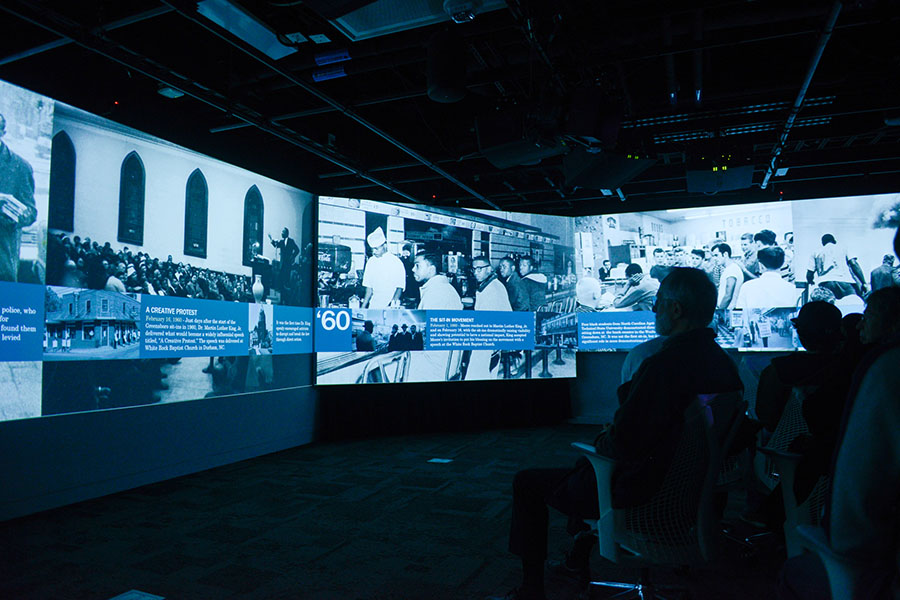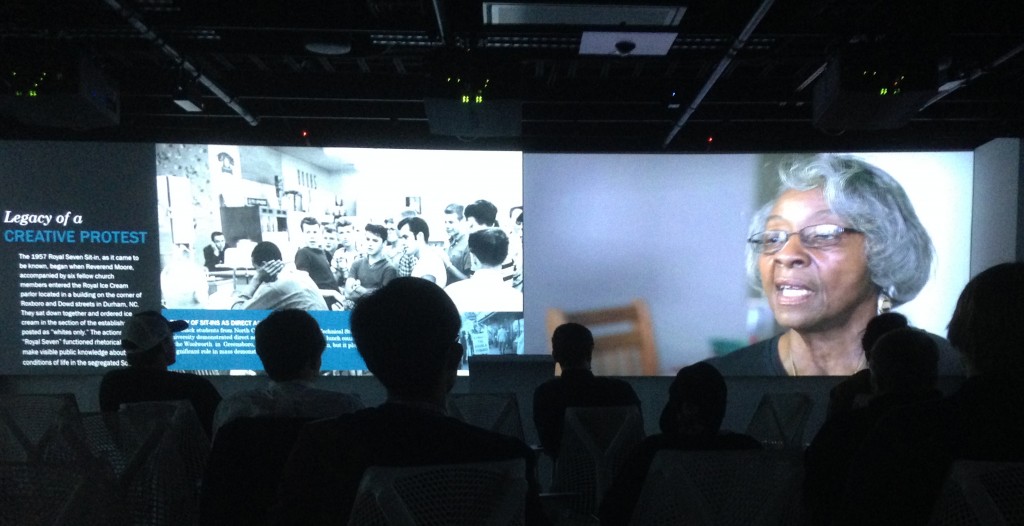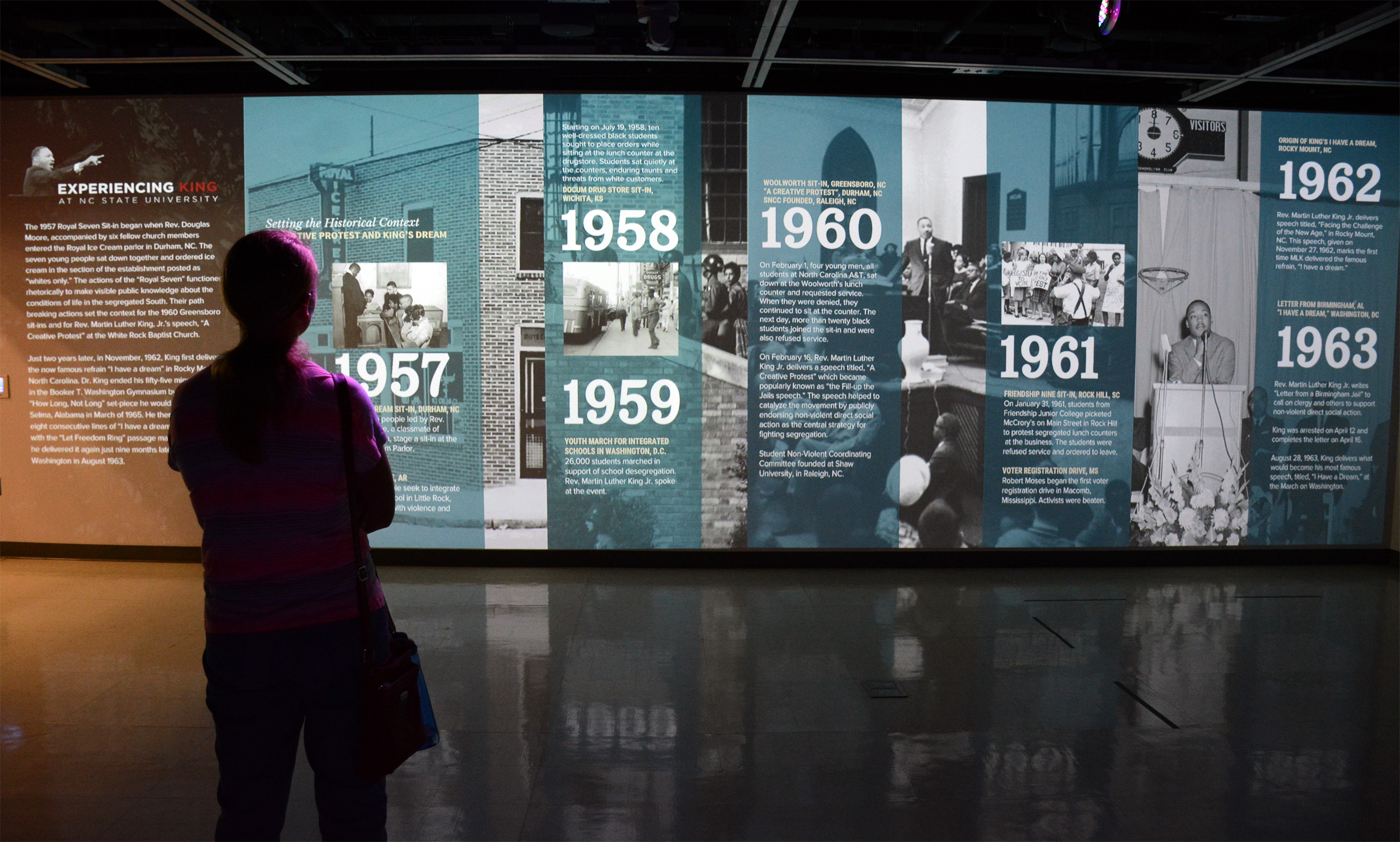Historical Experience
Historical Experience
As with many significant events in history, the events that led up to Dr. Martin Luther King’s delivery of his speech, “A Creative Protest,” in February 1960 are as important as the speech itself and the components of the vMLK project showcase this historical context. The events that led up to that evening help us to understand how this particular speech came to be delivered by this particular person on this particular day in this particular church and city.
Cite this page as: vMLK Project Team. Virtual Martin Luther King, Jr. Project. 2019. Retrieved from https://vmlk.chass.ncsu.edu/experience/historical/
Overview of the Historical Experience of the Speech
On June 23, 1957, nearly three years before the now famous sit-in at the Woolworths’ store in Greensboro, North Carolina, Reverend Douglas Moore, the pastor of Asbury Temple United Methodist Church in Durham, organized a protest at the Royal Ice Cream Company. Rev. Moore had been a classmate of Dr. King’s in Boston and had tried to convince him to join Moore and another classmate, George Thomas, in non-violent direct action while they were in Boston. King felt strongly, at that time, that a conversion approach based on traditional oratorical agitation — speeches, rallies, and petitions for redress — was the best path to follow to change people’s hearts and minds about racial segregation. When the students in Greensboro started their sit-in on February 1, 1960, Moore, and his colleague Floyd McKissick, drove to Greensboro to hold training sessions and to develop strategies to help the sit-ins spread. Moore reached out to Martin Luther King, Jr. and on February 16, with the sit-ins dramatically raising visibility and showing potential to have national impact, King accepted Moore’s invitation to speak in Durham where, Moore promised, “we’re ready” to hear the message that citizens must be ready to fill up the jails of the South if that was what was needed to attain civil rights and human dignity for all.


